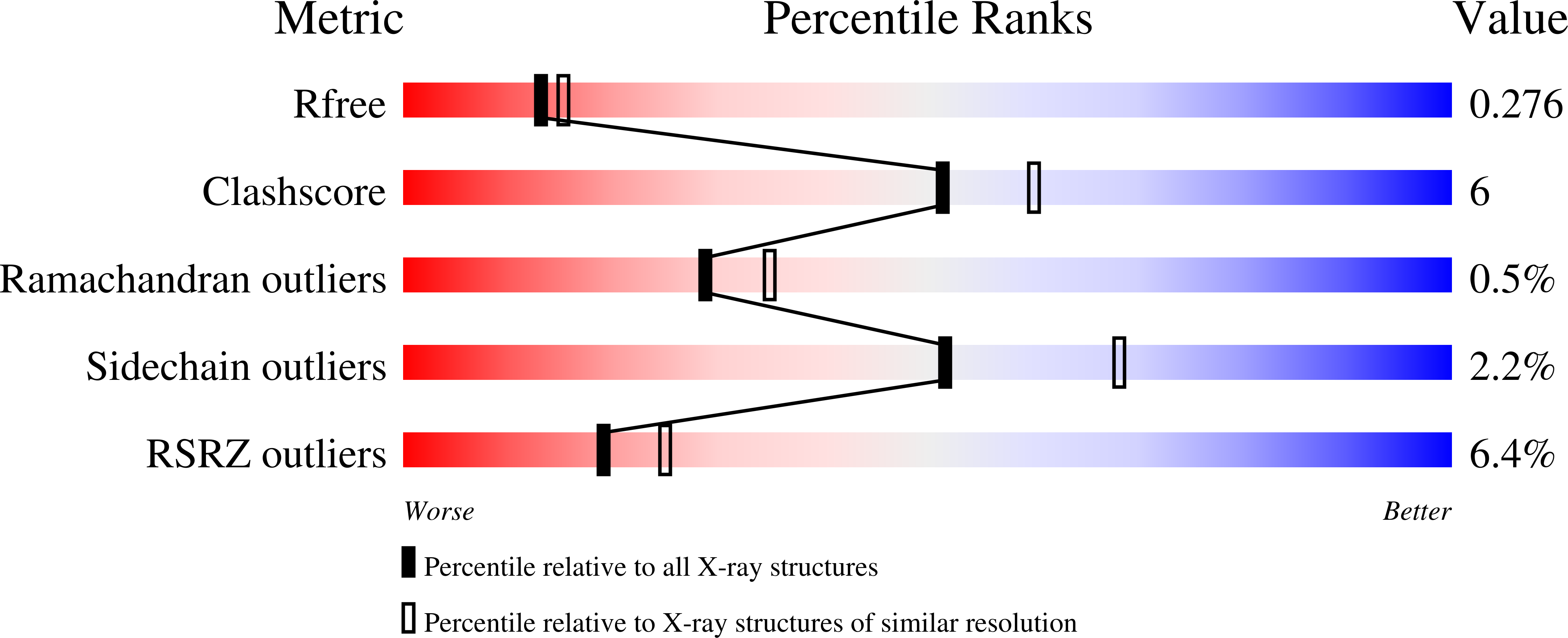Validation of IMS-MS as a screening tool to identify type II kinase inhibitors of FGFR1 kinase.
Beeston, H.S., Klein, T., Norman, R.A., Tucker, J.A., Anderson, M., Ashcroft, A.E., Holdgate, G.A.(2021) Rapid Commun Mass Spectrom : e9130-e9130
- PubMed: 34038603
- DOI: https://doi.org/10.1002/rcm.9130
- Primary Citation of Related Structures:
4UWB, 4UWC - PubMed Abstract:
The protein kinase FGFR1 regulates cellular processes in human development. As over-activity of FGFR1 is implicated with cancer, effective inhibitors are in demand. Type I inhibitors, which bind to the active form of FGFR1, are less effective than type II inhibitors, which bind to the inactive form. Screening to distinguish between type I and type II inhibitors is required. X-ray crystallography was used to indicate whether a range of potential inhibitors bind to the active or inactive FGFR1 kinase conformation. The binding affinity of each ligand to FGFR1 was measured using biochemical methods. Electrospray ionisation - ion mobility spectrometry - mass spectrometry (ESI-IMS-MS) in conjunction with collision-induced protein unfolding generated a conformational profile of each FGFR1-ligand complex. The results indicate that the protein's conformational profile depends on whether the inhibitor is type I or type II. X-ray crystallography confirmed which of the kinase inhibitors bind to the active or inactive form of FGFR1 kinase. Collision-induced unfolding combined with ESI-IMS-MS showed distinct differences in the FGFR1 folding landscape for type I and type II inhibitors. Biochemical studies indicated a similar range of FGFR1 affinities for both types of inhibitors, thus providing confidence that the conformational variations detected using ESI-IMS-MS can be interpretated unequivocally and that this is an effective screening method. A robust ESI-IMS-MS method has been implemented to distinguish between the binding mode of type I and type II inhibitors by monitoring the conformational unfolding profile of FGFR1. This rapid method requires low sample concentrations and could be used as a high-throughput screening technique for the characterisation of novel kinase inhibitors.
Organizational Affiliation:
Astbury Centre for Structural Molecular Biology & Faculty of Biological Sciences, University of Leeds, Leeds, LS2 9JT, UK.

















